Collection of Literature and Sources on the Kola Nut
We present a comprehensive collection of literature, studies, reports, and other sources that delve deeply into the kola nut. This collection encompasses a variety of perspectives, including historical, scientific, cultural, socio-economic, and religious aspects.
Contents of the Collection
- Studies and Books: Scholarly articles and books that examine the kola nut from various angles.
- Lectures and Investigations: Presentations and detailed studies on the kola nut.
- Laboratory and Import Reports: In-depth information from public databases.
- Historical Records: Older documents and records.
- Unconventional Works: Alternative studies and investigations that stand alongside the dominant scientific discourse.
Contribution to the Collection
If you are aware of any additional relevant sources, please send them to our editorial team:
Email:
Note from the Editorial Team
This collection is not exhaustive, and the included works have been selected without bias by the editorial team. They are intended to provide interested readers with the opportunity to expand their knowledge at their desired level. Some of the works are cited or referenced in editorial articles on our website, which is appropriately indicated.
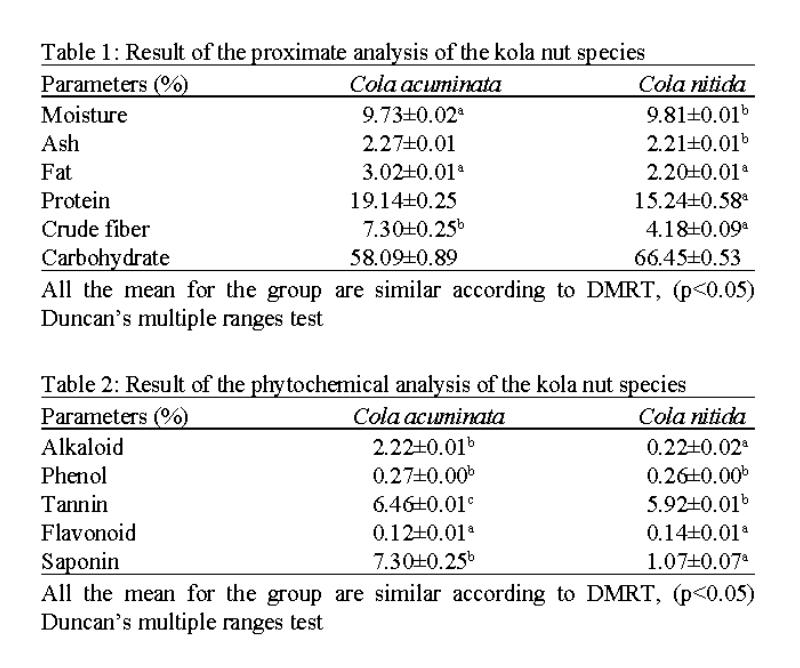
Title: Proximate and Phytochemical of Cola nitida and Cola acuminata
Authors: E. A. Dewole, D. F. A. Dewumi, J. Y. T. Alabi, A. Adegoke
Publication Date: 2013
Language: English
Type: Study
page count: 4 pages
Summary: This study concerns itself with the phytochemical properties of cola acuminata and cola nitida and the authors provide detailed results about the composition and ingredients of both kinds of kola.
Link: Proximate and Phytochemical of Cola nitida and Cola acuminata - verfügbar via SciAlert
Source: Pakistan Journal of Biological Sciences 16 (22), 2013
- Details
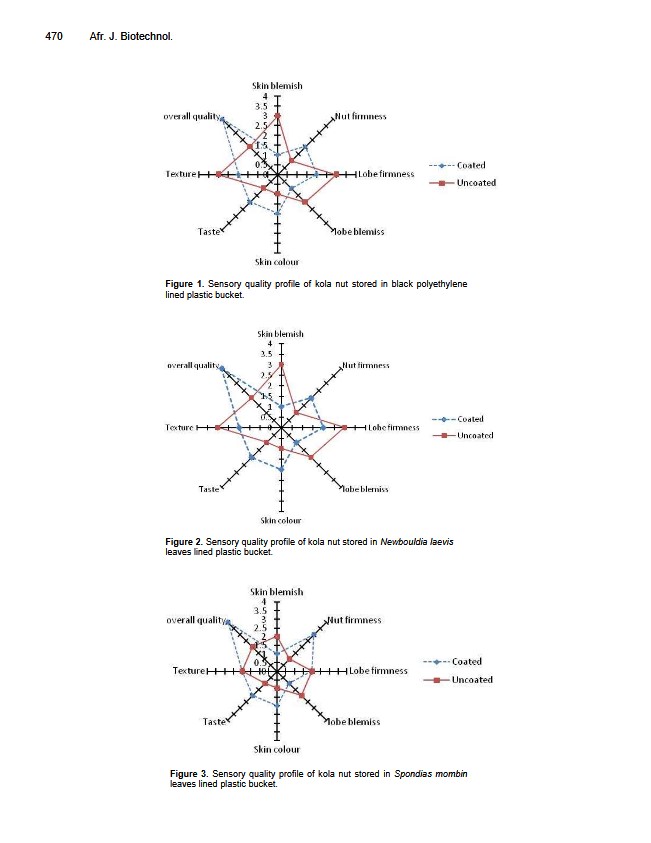
Title: Influence of rural processing methods and postharvest storage treatment on quality characteristics of kola nut (acuminata Schott & Endl.)
Authors: S. C. Eze, G. I. Ameh, K. I. Ugwuoke, C. C. Onyeke, J. O. Ozioko
Publication Date: 2014
Language: English
Type: Study
page count: 8 pages
Summary: A study on the effects of modern and traditional methods for the storage and processing of cola acuminata after harvest. The scientists conclude that traditional storage (wrapped in moist leaves and with optimal shielding from light) can largely replace the use of pesticides for pest control. Additionally, retaining the inner skin (testa) is an effective protection against weight loss due to dehydration and premature germination.
Source: African Journal of Biotechnology, 15. Januar 2015
- Details
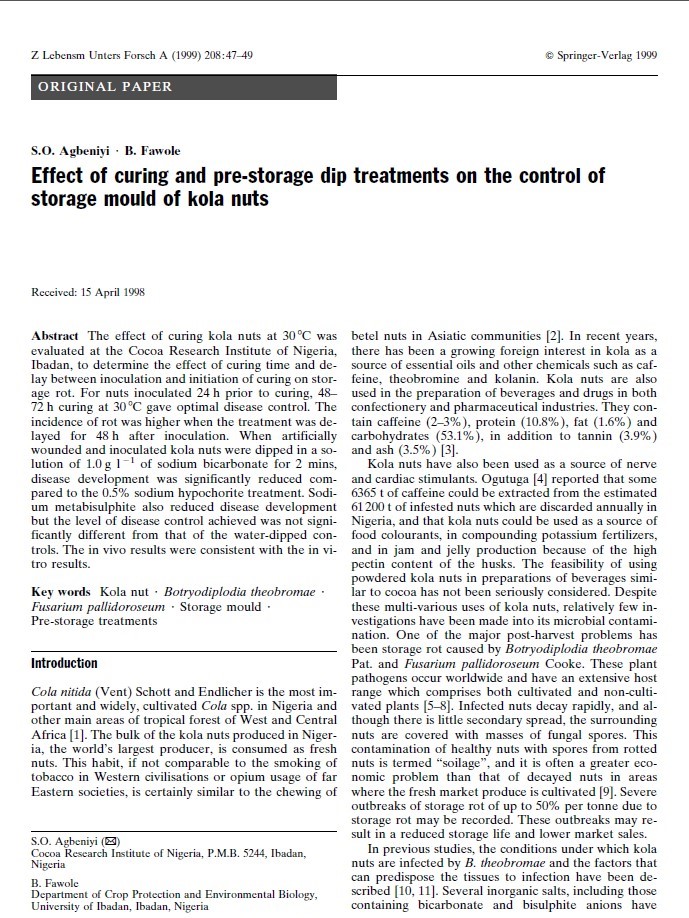
Title: Effect of curing and pre-storage dip treatments on the control of storage mould of kola nuts
Authors: S. O. Agbeniyi, B. Fawole
Publication Date: 1998
Language: English
Type: Study
page count: 3 pages
Summary: A brief study on the effectiveness of chemical treatment of harvested kola nuts. The two researchers specifically examined the impact on the formation and spread of mold, as this can render large harvests unsellable and unusable. They conclude that pre-drying (known as 'curing') significantly reduces mold, although this process is time-consuming. Therefore, a shortened drying process in combination with chemical treatment is also possible, effective, and safe for health.
Source: Zeitschrift für Lebensmittelunteruschung und Forschung, January 1999, Publisher: Springer Nature Link
- Details

Title: Biological Evaluation of Garcinia kola (Heckel)
Author(s): Abdulrahman M. Dogara, Saber W. Hamad, Harmand A. Hama, Sarwan W. Bradosty, Soran Kayfi, Sawsan S. Al-Rawi, Abubakar A. Lema
Publication Date: 2021
Language: English
Type: Metastudy
page count: 15 pages
Summary: The authors compile many studies on individual components of Garcinia kola in this overview and summarize the findings of these studies. They emphasize their conviction of the high potential of Garcinia kola as a 'miracle plant' and its active ingredients found in all parts of the plant. However, they also stress the need for clinical studies on human subjects to thoroughly investigate the effects and dosage, as bitter kola can be toxic in high amounts.
Link: Evaluation of garcinia kola - available via Wiley
Source: Advances in Pharmacological and Pharmaceutical Sciences, 28. April 2022
- Details
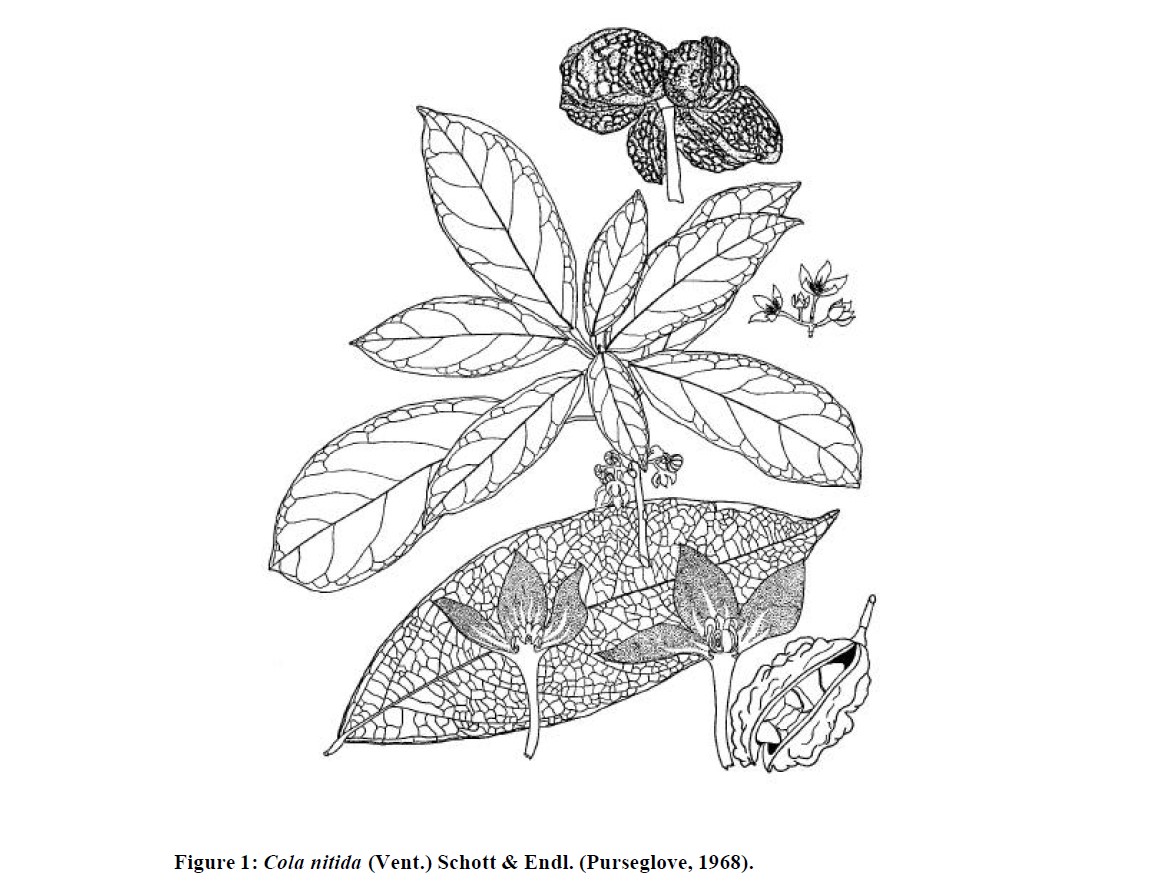
Title: Cola Nitida & Cola Acuminata (from "The Key non-timber Forest Products of Central Africa")
Author(s): Emmanuel Tachie-Obeng, Nick Brown
Publication Date: 2004
Language: English
Type: Report
page count: 39 pages
Summary: An audit report on the status of economic utilization of the kola nut in West Africa. In Chapter 5, 'Kola Nut,' the botanical properties are detailed and thoroughly analyzed, particularly from the perspective of facilitating or hindering economic utilization. Developed in collaboration between the University of Oxford, University of Washington, and the Central African Regional Program for the Environment.
Link: Cola Nitida & Cola Acuminata - available via Doc Developpement Durable
Source: The Central African Regional Program for the Environment
- Details
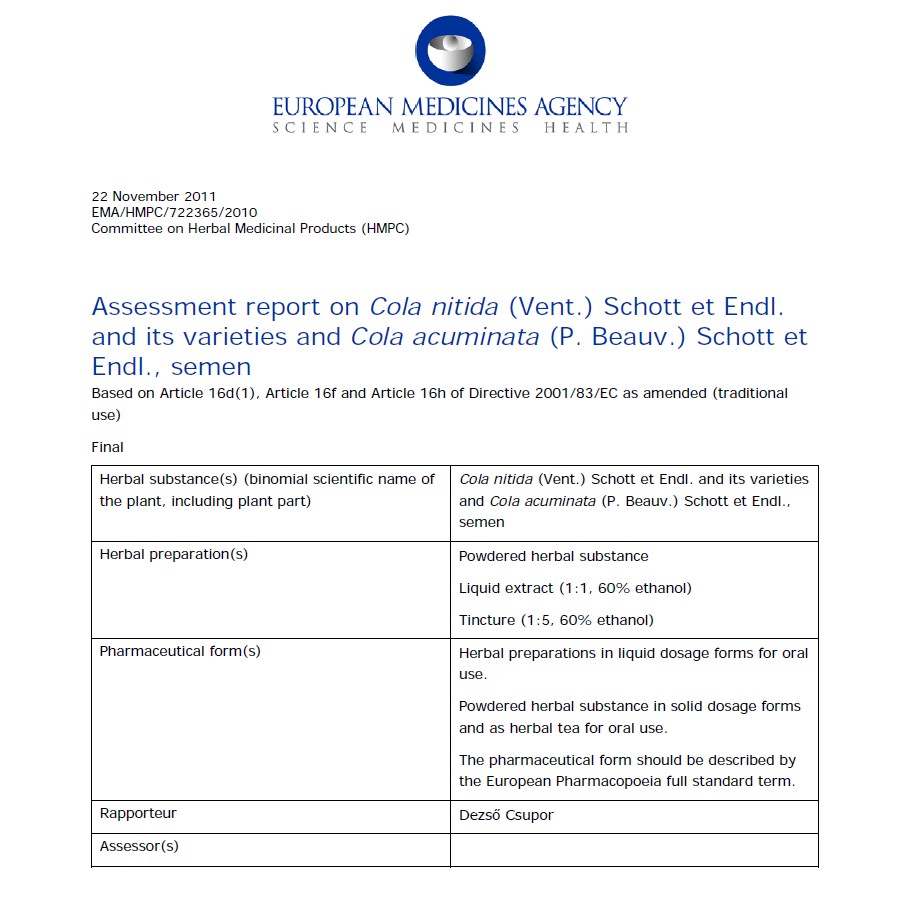
Title: Assessment report on Cola nitida (Vent.) Schott et Endl. and its varieties and Cola acuminata (P. Beauv.) Schott et Endl., semen
Author(s): Dezsó Csupor
Publication Date: 2011
Language: English
Type: Report
page count: 26 pages
Summary: This investigative report by the Committee on Herbal Medicinal Products of the European Medicines Agency intensively deals with the physical effects of kola consumption and extensively analyzes the existing studies and animal experiments on the health risks of kola consumption. The report pays particular attention to the effects on infants, unborn children, and mothers. It concludes that kola can be of health concern due to its caffeine content in high doses, but in everyday use by adults with usual doses, there is no health risk.
Link: Assessment Report on Cola nitida und cola acuminata - available via EMA
Source: EMA/HMPC/722365/2010, Committee on Herbal Medicinal Products (HMPC)
- Details
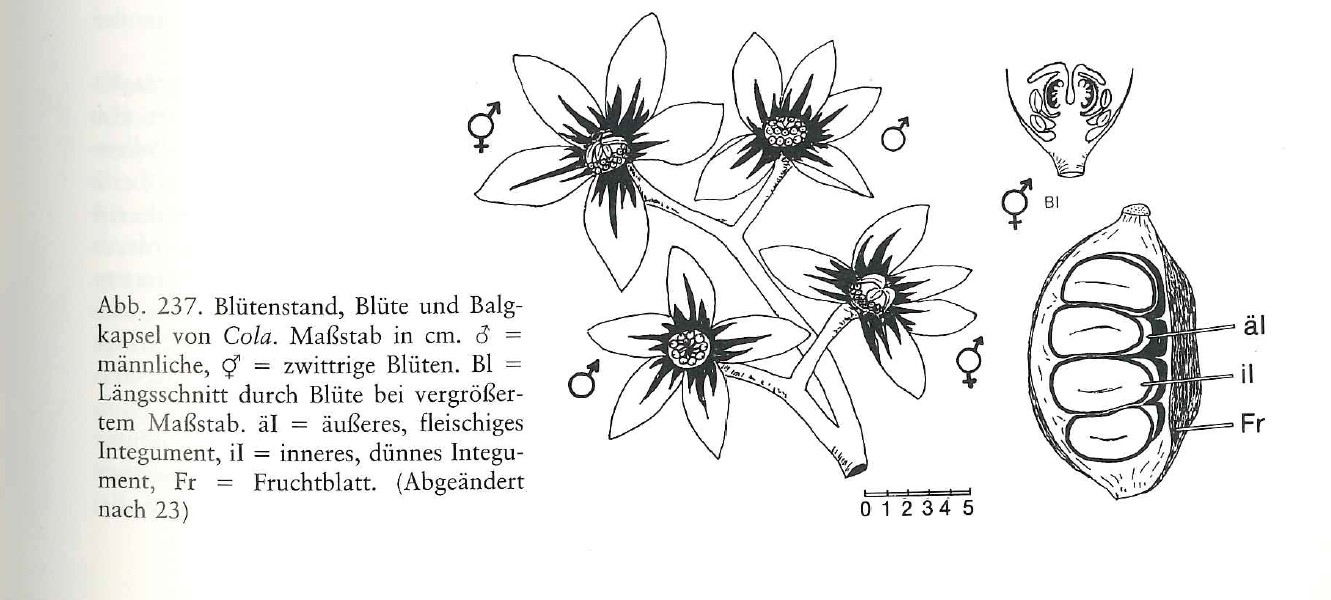
Title: Spezieller Pflanzenbau in den Tropen und Subtropen, Kapitel 6.5 Kola
Author(s): Sigmund Rehm
Publication Date: 1989
Language: English
Type: Lexicon
page count: 6 pages
Summary: A brief overview from a lexicon on tropical plant cultivation, covering all important aspects of the kola nut for cultivation and economic use, including growth, pests, yield, cultivation, harvest, and processing.
Source: "Spezieller Pflanzenbau in den Tropen und Subtropen", 2. Edition, Pages 470 - 475
- Details

Title: The quality of Nigerian kola nuts
Author(s): O. O. Atanda, A. Olutayo, F. C. Mokwunye, A. O. Oyebanji, M. O. Adegunwa
Publication date: 2011
Language: English
Type: Study
Length: 6 Pages
Kurzübersicht: A study done by a team of nigerian scientists to determine the nutrient composition and mineral content of kola nuts obtained from a nigerian market.
Link: The quality of nigerian kola nuts - available via Academic Journals
Source: African Journal of Food Science Vol. 5(17), Pages 904-909, 30 December, 2011
- Details

Title: Indigenous knowledge and socio-economic values of three kola species (cola nitida, cola acuminata and garcinia kola) used in southern Benin
Authors: D-N. Durand (MSc.), A-S. Hubert (PhD.), D. Nafan (PhD.), A. Adolphe (PhD.), B-M. Farid (PhD.), Sezan Alphonse (PhD.), B-M. Lamine (PhD.)
Publication Date: 2015
Language: English
Type: Survey
page count: 23 pages
Summary: This study examined, through surveys of the rural population in various regions of southern Benin, the prior knowledge and experience of the population in dealing with the three most important kola species (Cola acuminata, Cola nitida, Garcinia kola) and some rare wild species. The results are broken down by ethnic group, gender, age, and religion. The study also attempts to determine the market value and cultural significance of the three most important kolas. It concludes that Cola acuminata has the highest significance in spiritual uses and is therefore the most expensive, but for everyday use and enjoyment, Cola nitida is significantly more popular, while Garcinia kola is mainly valued for its medicinal properties.
Source: European Scientific Journal 11(36):1857-7881
- Details
Title: Kolanut Production, Processing and Marketing in the South Eastern States of Nigeria
Authors: E.U. Asogwa, A.H. Otuonye, K.A. Oluyole, T.C.N. Ndubuaku, E.O. Uwagboe
Publication Date: 2012
Language: English
Type: Paper
page count: 6
Summary: A short paper about the production of kola nut in nigeria. It engages with farming and selling, as well as challenges for the farmers such as parasites.
Link: Kolanut Production, Processing and Marketing in Nigeria - available via Researchgate
Source: American-Eurasian Journal of Agricultural & Environmental Science, 12 (4): 463-468, 2012
- Details
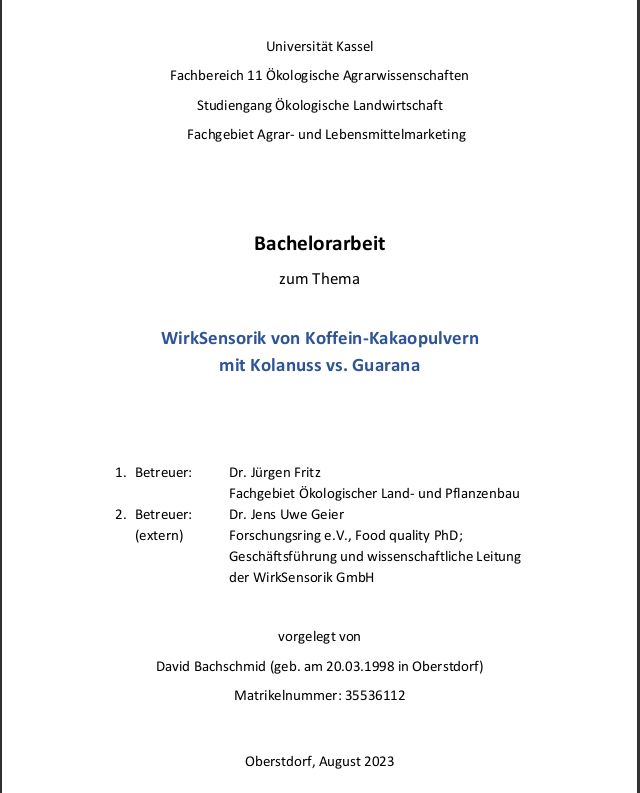
Title: WirkSensorik von Koffein-Kakaopulvern mit Kolanuss vs. Guarana
Authors: David Bachschmid
Publication Date: 2023
Language: German
Type: Bachelorthesis
page count: 29 pages
Summary: This thesis examines two cocoa drink powders with cola nut and guarana as caffeine sources. Both contain more caffeine than coffee but are considered gentler on the stomach. In the seminar, the effects of these caffeine sources were studied with inexperienced participants. Using effect sensor technology, they analyzed the effects on the body, mind, and emotions. The results of the three seminars in December 2022 were evaluated and interpreted. The results were analyzed and interpreted. First, the method is explained, followed by the structure and procedure of the study.
Link: see reading sample (in the FAQ) on all-active Lebensmittel-Kommunikation
Source: Bachelor’s thesis, University of Kassel, Department of Organic Agricultural Sciences
ISBN: - - -
- Details

Title: Kola production and settlement mobility among the Dan of Nimba, Liberia
Authors: Martin Ford
Date: 1992
Language:
Type:
page count: 14
summary: The excerpt deals with the cultural and economic significance of the cola nut among the Dan people in Liberia. It particularly focuses on the development of trade routes and how cola shaped and was shaped by migration and settlement patterns.
Link: https://www.jstor.org/stable/3601629
Source: African Economic History, No. 20 (1992), Seiten 51 - 63
- Details
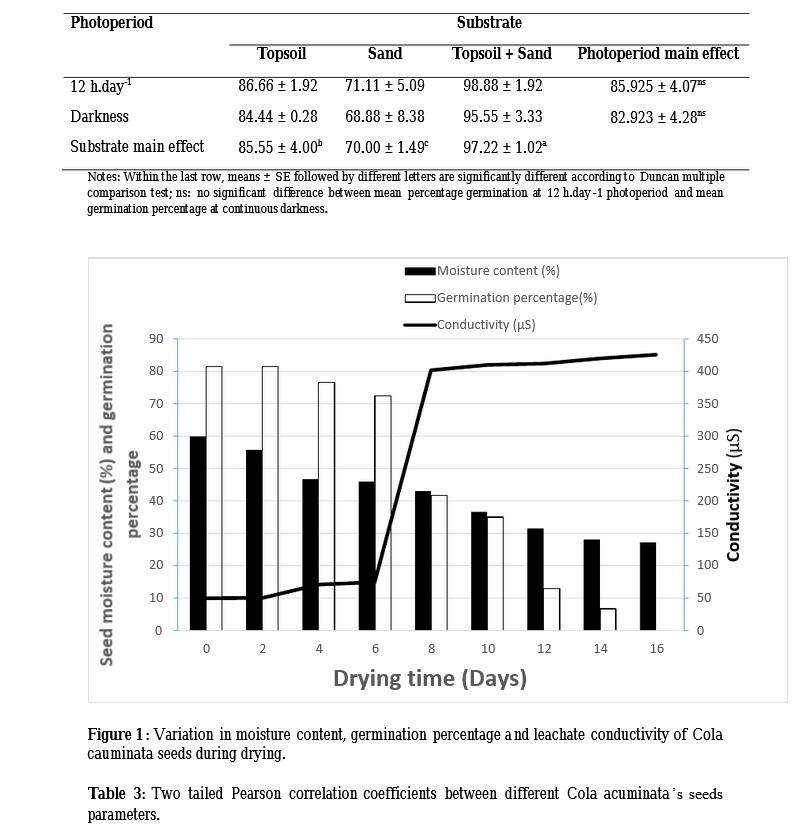
Title: Germination Responses of Cola acuminata (Pal. De Beauv.) Seeds to Different Substrates, Photoperiods, and Dehydration
Authors: Gabriel Kanmegne, Gaby Famen Kamtat, Fonkou Théophile
Publication Date: 2021
Language: English
Type: Study
page count: 9 pages
Summary: This study examines the effect of soil composition and light influence on the germination of Cola acuminata and concludes that light exposure has no effect on germination, but the seeds respond to the water storage capacity of the soil. The authors conclude that a mixture of sandy and humus soil is optimal for germination, and their experiments also show that Cola acuminata germinates successfully even in complete darkness.
Source: International Journal of Biological and Chemical Sciences 15 (2), Pages 452-460, April 2021
ISBN: - - -
- Details
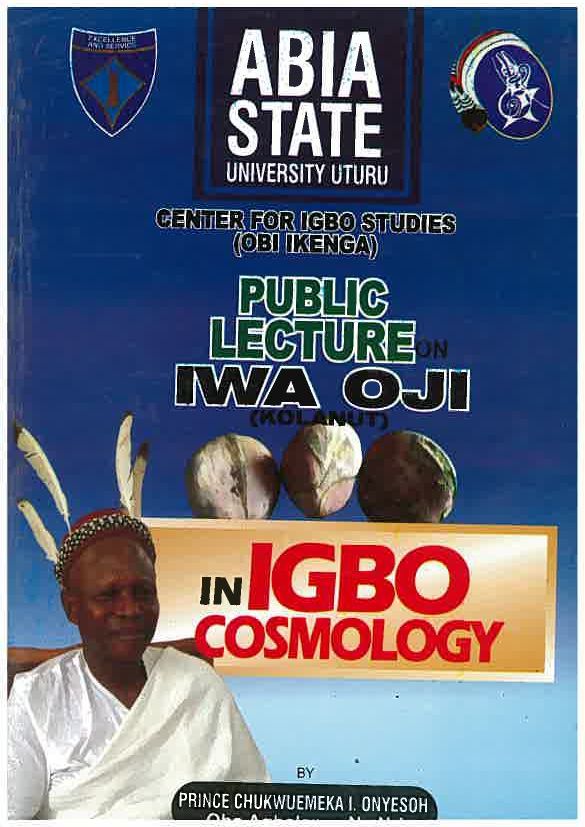
Title: Public Lecture on Iwa Oji in Igbo Cosmology
Authors: Prinz Chukwuemeka 1. Onyesoh
Publication Date: 2014
Language: English
Type: Transcript of a lecture
page count: 14 pages
Summary: A lecture by Crown Prince Chukwuemeka I. Onyesoh on the cultural significance of the kola nut and the proper execution of associated customs among the Igbo people of Nigeria.
Link: Held in the University of Accra Library
Source: Author-published; printed by Snaap Press Nigeria Ltd
ISBN: 978-978-910-345-4
- Details
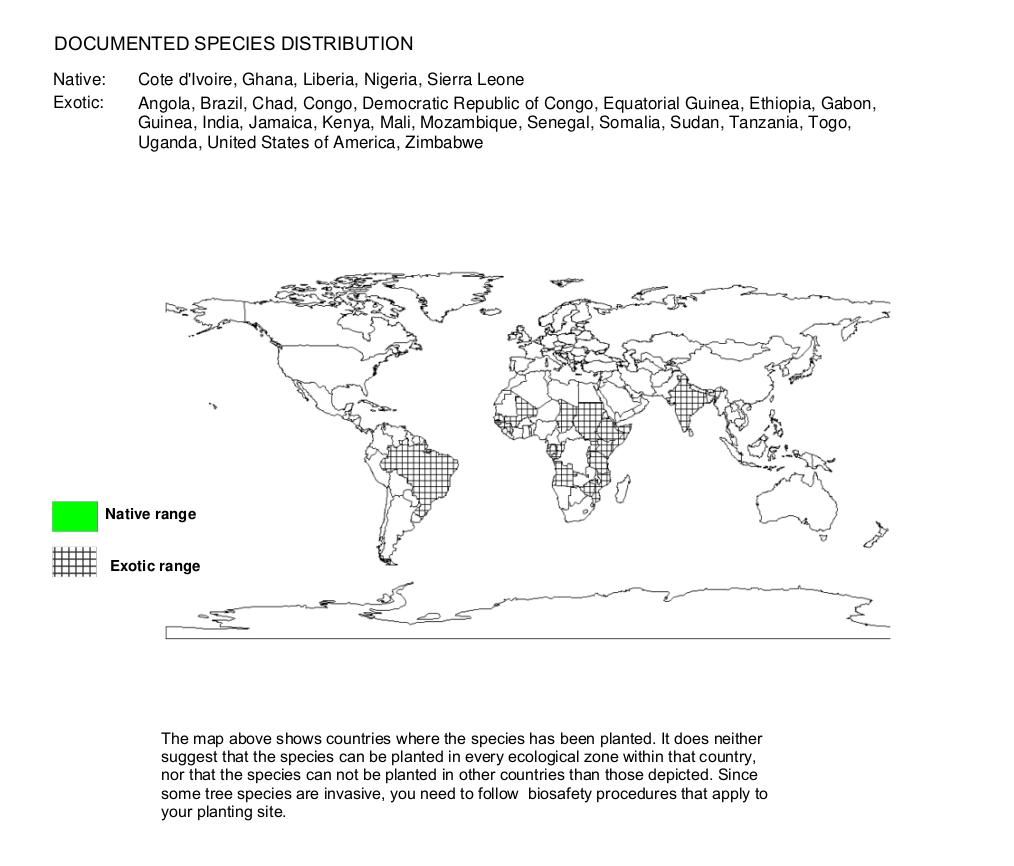
Title: Agroforestry Database - Cola nitida
Authors: Orwa C., A. Mutua, Kindt R., Jamnadass R., S. Anthony
Publication Date: 2009
Language: English
Type: PDF
page count: 5 pages
Summary: An examination of Cola nitida covering all aspects relevant to forestry and cultivation. The overview briefly addresses botany, uses, cultural significance, propagation, and more.
Link: Cola nitida
Source: FORESTS TREES PEOPLE PLANET – CIFOR-ICRAF - Agroforestry Database
- Details
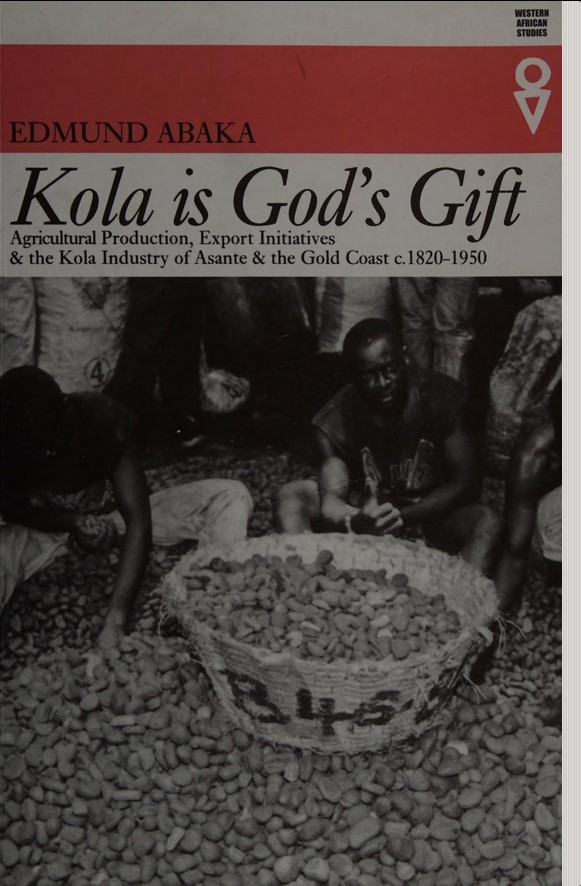
Title: 'Kola is God's Gift': Agricultural Production, Export Initiatives & the Kola Industry in Asante & the Gold Coast c. 1820-1950
Authors: Edmund Kobina Abaka
Publication Date: 2005
Language: English
Type: book
page count: 196 pages
Summary: A detailed historical analysis of the development and transformation of the kola trade in the West African coastal region and the Volta area. Particularly noteworthy as it incorporates authentic African experiences and perspectives, and the author himself is from Africa. It also engagingly covers botanical topics such as propagation, care, harvest, and processing, as well as medicine and religion.
Link:'Kola is God's Gift' - available via Internet Archive
Source:Publisher: Oxford, James Currey
ISBN: - - -
- Details
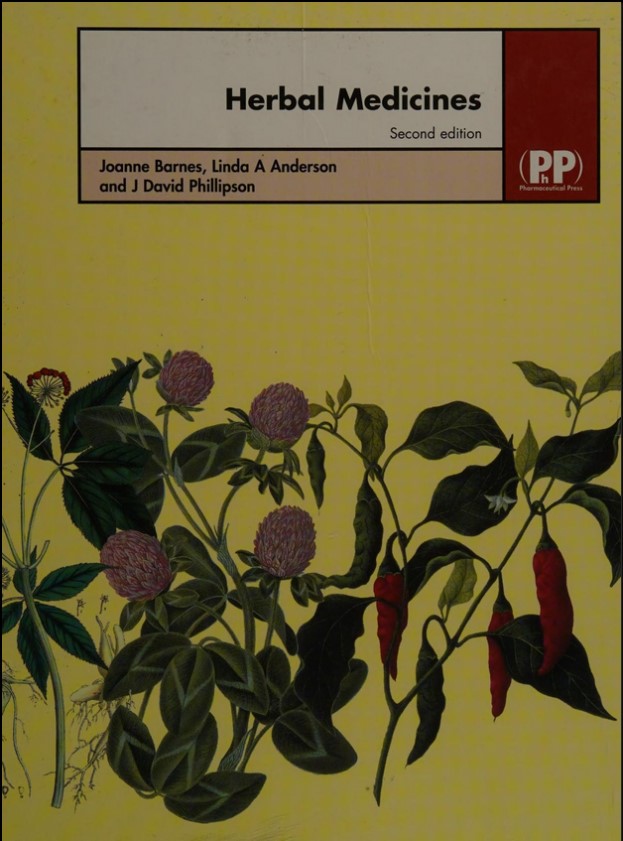
Title: Herbal medicines: a guide for healthcare professionals
Authors: Joanne Barnes, Linda A. Anderson, J. David Phillipson
Publication Date: 2002
Language: English
Type: Encyclopedia entry
page count: 2 pages
Summary: A concise reference guide to the key chemical and botanical properties of Cola nitida for pharmaceutical use. (Pages 149–150).
Link: Herbal medicine - available via Internet Archive
Source: Pharmaceutical Press, Herbal Medicines (2nd edition)
ISBN: - - -
- Details
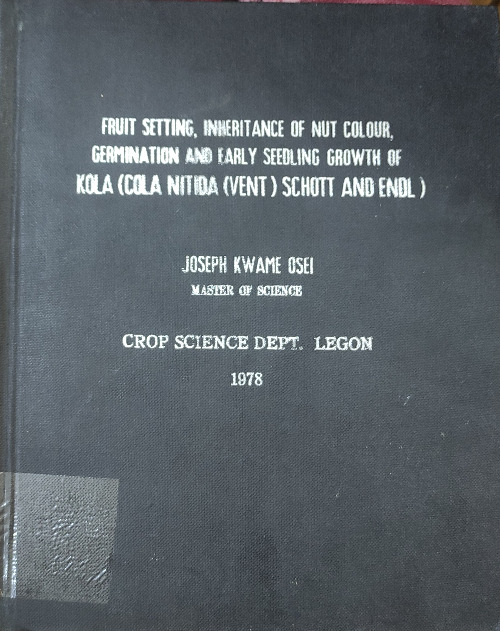
Title: Fruit setting, inheritance of nut colour, germination and early seedling growth of kola (cola nitida (Vent) Schott and Endl)
Authors: Joseph Kwame Osei M.S.
Publication Date: 1987
Language: English
Type: Master’s degree dissertation
page count: 58 pages
Summary: A doctoral dissertation by Joseph Kwame Osei, detailing the differences among the three primary kola nut colors (white, pink, red) and their impact on growth and propagation.
Source: Held in the University of Accra Library
- Details
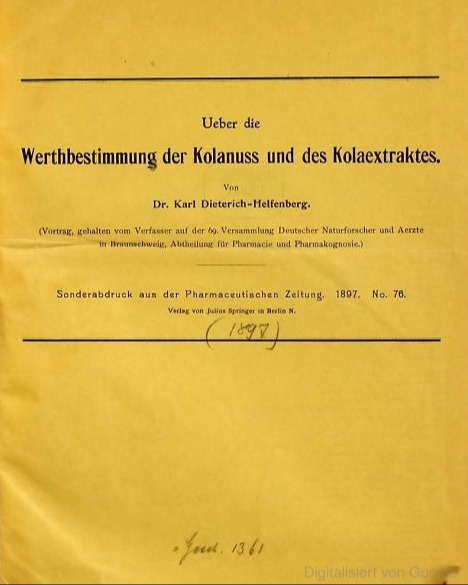
Title: Ueber die Werthbestimmung der Kolanuss und des Kolaextraktes
Authors: Dr. Karl Dieterich-Helfenberg
Publication Date: 1897
Language: German
Type: Lecture transcript
page count: 11 pages
Summary: A scientific lecture delivered at the 69th Assembly of German Scientists and Physicians (Braunschweig, 1897), Section of Pharmacy and Pharmacognosy. Focuses on the chemical properties, active compounds, and methods of extract production.
Link:On the Valuation of Kola Nut and Kola Extract – available via Google Books
Source: Reprinted from Pharmaceutische Zeitung (1897, No. 76), Julius Springer Verlag
ISBN: - - -
- Details
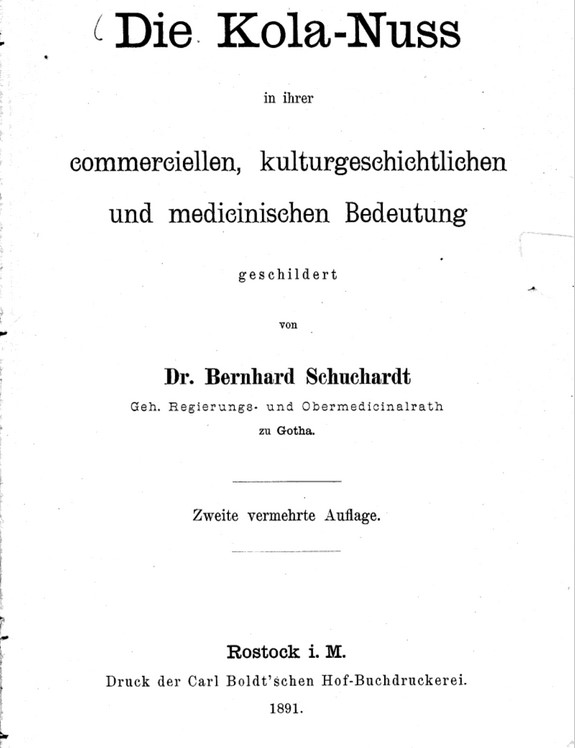
Title: Die Kola-Nuss in ihrer comerciellen, kulturgeschichtlichen und medicinischen Bedeutung
Authors: Dr. Bernhardt Schurchardt
Publication Date: 1891
Language: German
Type: Book (monograph)
page count: 96 pages
Summary: A late 19th-century compendium of knowledge on the kola nut, covering its history, cultural importance, botanical traits, chemical composition, and economic role. Notable for its extensive contemporary sources and reports—though not always scientifically rigorous by modern standards, these accounts offer unique historical insights.
Source: Carl Boldt Verlag, 2nd edition
ISBN: - - -
- Details

 DE
DE  EN
EN